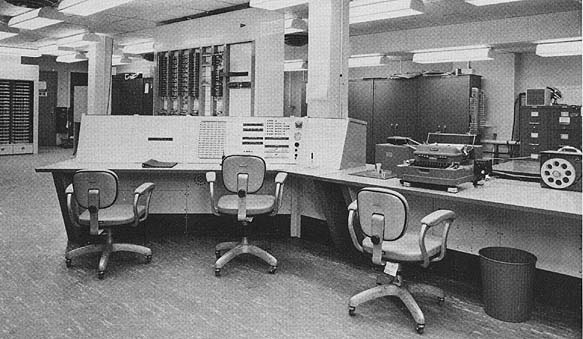You didn't construct the executable image by hand in a hex editor.
But if you did, who wrote the hex editor?
Turtles all the way down!
But if you did, who wrote the hex editor?
Turtles all the way down!

|
You didn't construct the executable image by hand in a hex editor. But if you did, who wrote the hex editor? Turtles all the way down! |
|
|
I like turtles. Regards, -scott Welcome to Rivendell, Mr. Anderson. |
|
|
|
|
|
you can kill people for America at age 18 but need to be 21 to buy a beer |
|
|
-- Drew |
|
|
you can kill people for America at age 18 but need to be 21 to buy a beer |
|
|
Friden Flexowriter. You hit typewriter keys and it punches the holes in paper tape. Using manual paper tape punch was only used for editing. My first bit of code was machine code (homework assignment without benefit of assembler) and we did that in octal (not hex). The machine had an 18-bit word architecture, so it took 6 octal digits to specify a word. So, the code would have looked something like this: 145703 342521 231453 ... The professor wanted us appreciate the convenience of an assembler! Alex "There is a cult of ignorance in the United States, and there has always been. The strain of anti-intellectualism has been a constant thread winding its way through our political and cultural life, nurtured by the false notion that democracy means that "my ignorance is just as good as your knowledge." -- Isaac Asimov |
|
|
Not quite sure that's the right word for that. -- Drew |
|
|
you can kill people for America at age 18 but need to be 21 to buy a beer |
|
|
My first "program" (to brute-force find and print prime numbers) was on a teletype with a paper tape punch/reader. 300 baud FTW! Neat story! I hope you're documenting these things in more detail somewhere! :-) Cheers, Scott. |
|
|
Computer History Museum.  It was the first computer to ever use both transistors for the circuitry and ferrite cores for memory. It was a single copy, proof of concept, machine built at MIT Lincoln Labs. It was a re-implementation of the vacuum tube based Whirlwind computer. Originally with 64 K words, it was downgraded to 4 K words when given to MIT's EE department. That original memory was redeployed in the MIT Lincoln Lab's TX-2 computer a 36-bit machine. As a side note, note the rectangular gray area to the left of the middle chair's backrest. That is an array of 16 x 18 toggle switches which coded the "boot loader" i.e. a bit like BIOS. The circuit designer was Ken Olson who, soon after the TX-2 project, started DEC (Digital Equipment Corp) and started making and selling the PDP-1 computer. Ken was good enough to give a PDP-1 to MIT. It was across the hall from my office, so I got to play with it on occasion. Alex "There is a cult of ignorance in the United States, and there has always been. The strain of anti-intellectualism has been a constant thread winding its way through our political and cultural life, nurtured by the false notion that democracy means that "my ignorance is just as good as your knowledge." -- Isaac Asimov |